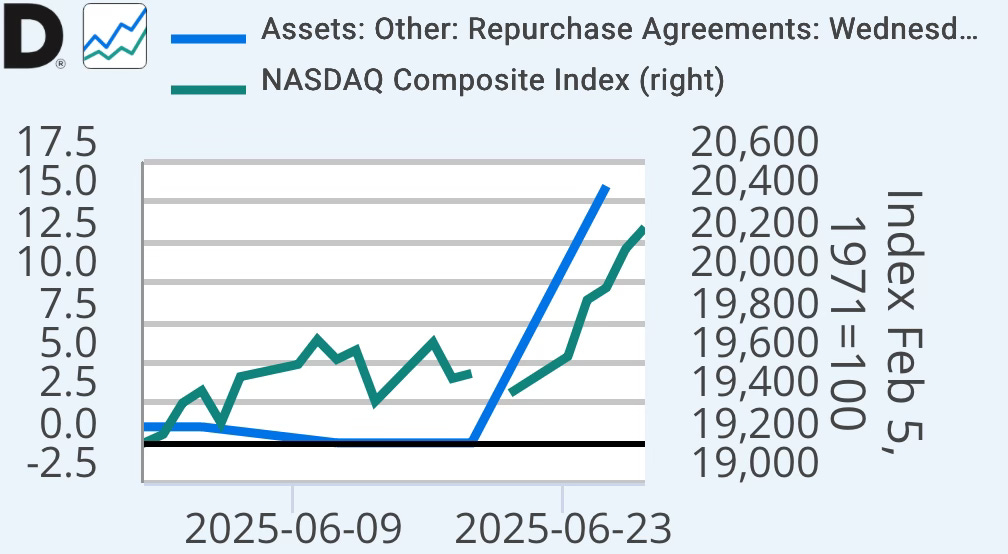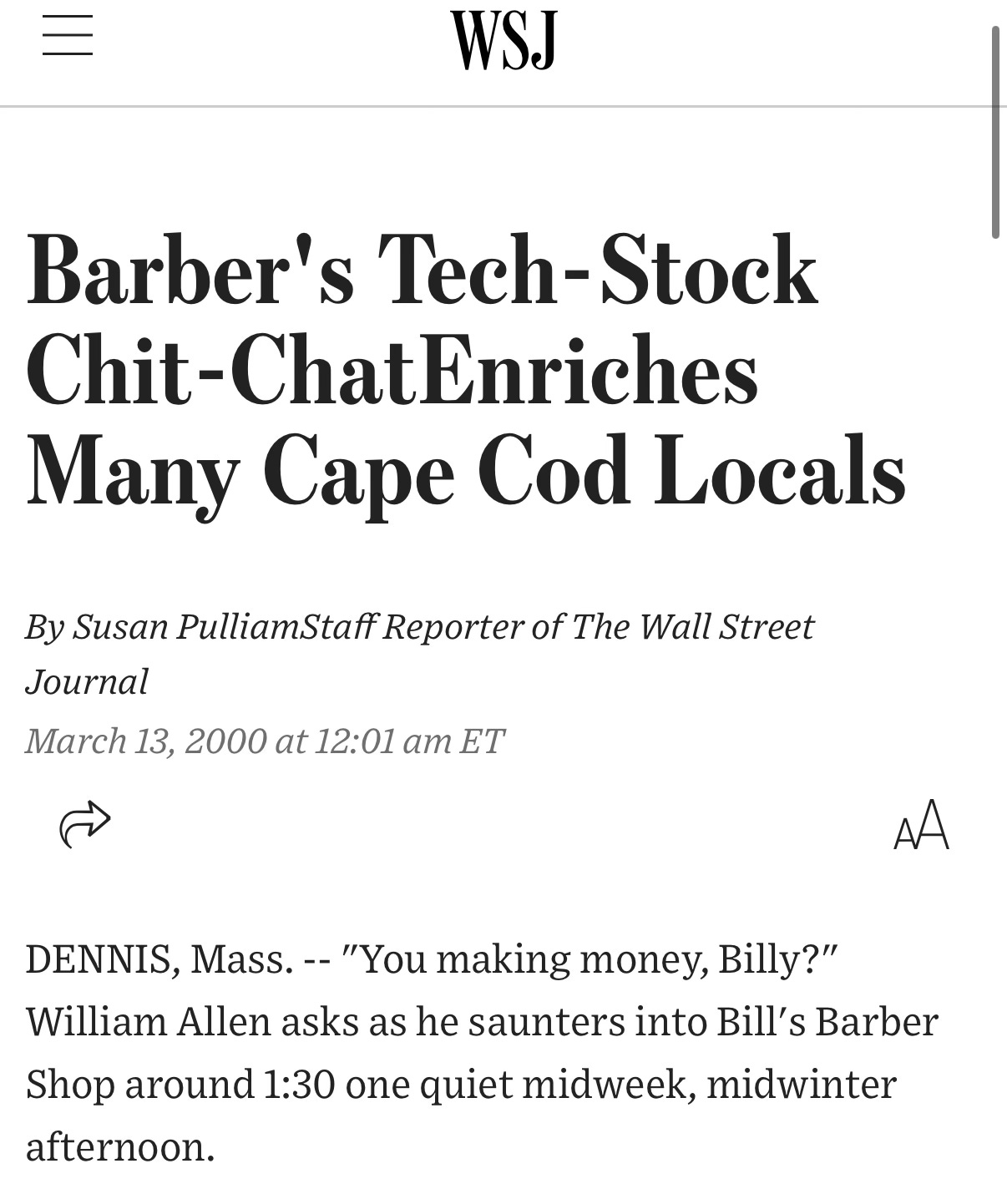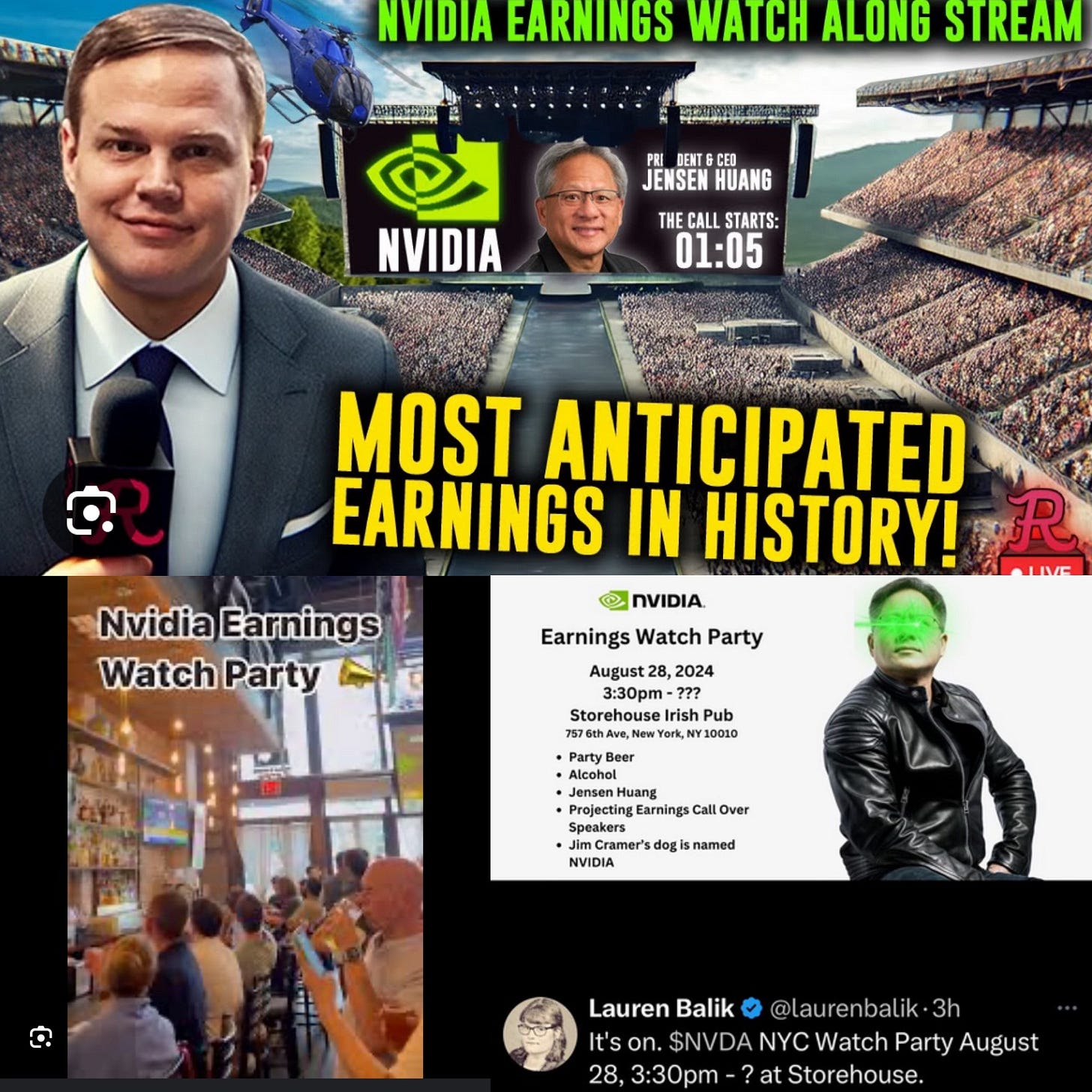Stock Market Dances to Record Highs
Liquidity is flowing, Leverage is high, but has the music stopped?
Midyear In Depth Report – June 30, 2025
The first half of 2025 on Wall Street is in the books. Stocks have not only recovered from the Trump tariff panic, they’ve danced to record highs. CNBC anchors are back to pumping meme stocks like burger companies with PEs over 500, and retail traders are celebrating their “genius” with every green tick up on their call options (explained here ). But as the confetti settles, a deeper question hangs in the air: how much longer can the music keep playing before someone kills the music?
This first half we have guided investors through hype cycles and flash crash, always focusing on protecting real purchasing power—not chasing the latest meme. Our research helped readers sidestep one of the worst of the flash crash, ride the bond barbell for steady income, and capture the gold breakout—now up 24% this year. Silver’s not far behind up 22%, and even Treasuries are yielding more today than almost anyone thought possible back in January ( as written in detail here ).
All the while, mainstream investors have been hypnotized by the dazzling spectacle of record highs. But behind the curtain, a different story is unfolding.
“When liquidity drys up, the financial environment would become complicated, but as long as the music is playing, you’ve got to get up and dance.” (As shown in the video below)
— Chuck Prince, Citigroup CEO, (As Citi was pumping it stock in 2007 even though they were one of the most insolvent banks at risk in 2008 , as it fell -98% in value from $55 to $0.97)
Drunk on Liquidity
On paper, things have never looked better. The S&P 500 & NASDAQ just closed out the midyear at all-time highs, up about 5% since January. Wall Street strategists are scrambling to upgrade their year-end targets, the financial media is spinning tales of a new “secular bull,” and retail investors are back to high-fiving on social media. If you look only at the surface, it’s hard not to get swept up in the hype.
But take a step back, and the cracks start to show. This is the same feeling that hung over the market in 2008. In 2000. What’s fueling this rally isn’t robust earnings or healthy economic growth—it’s liquidity. The Fed has quietly spiked the punch bowl (again), and everyone’s drinking it up. Discount window borrowing is surging (detailed here ). Repo operations have exploded 3,100% in just the last two weeks of June, as permanent asset purchases are back.
Overnight repo borrowing is also back on the cocktail list.
Wall Street isn’t dancing because the music is good; it’s dancing because the drinks are free.
*Regulators, Suspecting Fraud, Closed down Santa Anna National Bank a Texas Bank in Year’s Second U.S. Bank Failure.
Mainstream coverage won’t talk about it. The media shrugs off weak GDP data, ignores shrinking profit margins, and treats the Buffett Indicator’s 200%—the highest market cap to GDP ratio since the dot-com bubble—as if it’s perfectly normal.
Nobody asks why a handful of meme stocks are trading at insane valuations (20 of them in the SP500 have PEs higher than 50 with 5 companies over 100x). The liquidity is flowing, the music is loud & everyone keeps dancing.
But even a passing glance at the numbers shows the party is running on fumes. Tesla, once the darling of “real” innovation, is now trading at nearly 200 times earnings while demand for its core products craters—especially in California. The so-called Robo-taxi beta is little more than marketing vapor, and with the expiration of key EV tax credits in 2026 or sooner, Tesla’s margins look set to implode. At a sane multiple, the stock is worth $60, not $300.
Nvidia, the high priest of AI hype, is trading above 50 times earnings. Their accounts receivable are growing way faster than revenue ( details here )—a classic sign of aggressive revenue recognition. Last quarter, they conveniently excluded Chinese write-downs from their “adjusted” results, painting a far rosier picture than the underlying reality. Meanwhile, insiders have unloaded billions this year.
If any of this feels familiar, it should.
Mania’s (past & present)
Every bubble invents its own myth, until reality bursts it. Back in tech bubble 1.0, nowhere was this more obvious than at Bill’s Barbershop in Cape Cod. Bill, the owner, had transformed his humble shop into the area’s unofficial brokerage house. Clients would come in for a haircut and find CNBC blaring on multiple screens, the latest stock tips scrawled across a whiteboard, and a packed waiting room buzzing with speculation.
Stock quotes echoed louder than the sound of clippers. The euphoria was infectious: barbers, fishermen, retirees, and students were all trading tech stocks from their chairs, convinced they couldn’t lose.
It was retail mania in its purest form—a place where everyone thought they were a genius and the party would never end. But when the music stopped, so did the paper gains. The crash wiped out fortunes, left portfolios gutted, and silenced the bravado that once filled Bill’s tiny shop.
Fast forward to today and the location may have changed, but the fever has been dialed up 100x. Only now, the “barbershop” is everywhere—local bars throw Nvidia earnings watch parties,
Robinhood notifications chime constantly in people’s pockets, and social media platforms are flooded with hype videos about Tesla’s next miracle product. Retail excitement is back, and the belief in endless upside is stronger than ever. The crowd has simply moved from Bill’s Cape Cod chairs to TikTok livestreams and Discord servers.
The Consumer Reality: Wallets Are Emptying
While Wall Street toasts new highs, Main Street is in retreat. The latest data is undeniable. In May, personal income fell 0.4%. Disposable income dropped 0.6%. Auto sales are down nearly 50%. Gasoline demand is off by a fifth. Even food and beverage spending is shrinking. Unemployment is quietly creeping higher. And just as this weakness emerges, Exports are falling. The economic engine is sputtering.
And yet, the market keeps roaring ahead. This is always the signature of a true bubble: in the rearview mirror, it’s obvious; in the moment, it’s confusion, denial, and wild optimism.
Maybe this time really is different. Maybe endless money-printing and fiscal excess will make the cycle go away. But if it isn’t—if gravity still works—you need a playbook that goes beyond hope and hype.
Join now to unlock the full midyear strategy report:
The next Enron hiding in plain sight?
How Fed liquidity distorts valuations?
The latest barbell bond allocations for yield & safety
The only asset class outperforming the S&P 500 YTD
👉 Join TheCoastal Journal Full access to get all the details & actionable portfolio moves.
Keep reading with a 7-day free trial
Subscribe to The Coastal Journal to keep reading this post and get 7 days of free access to the full post archives.













